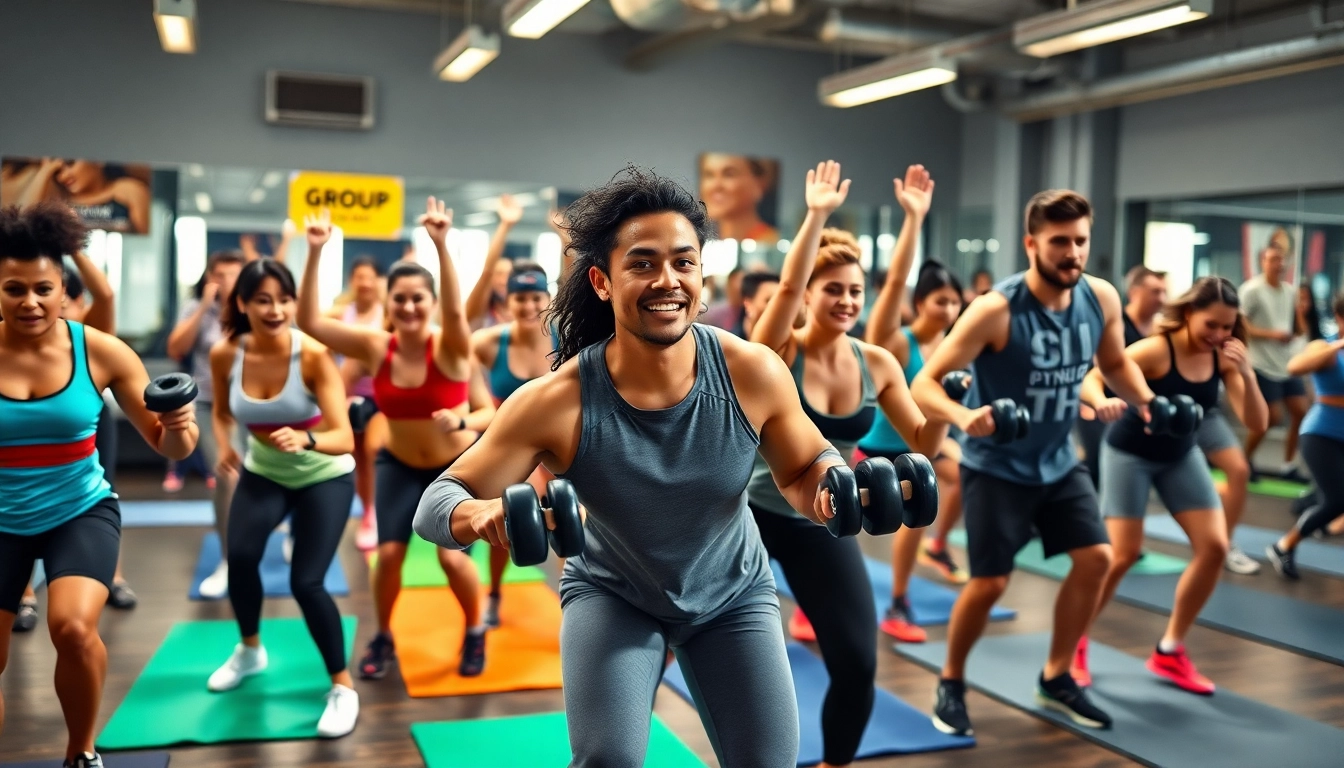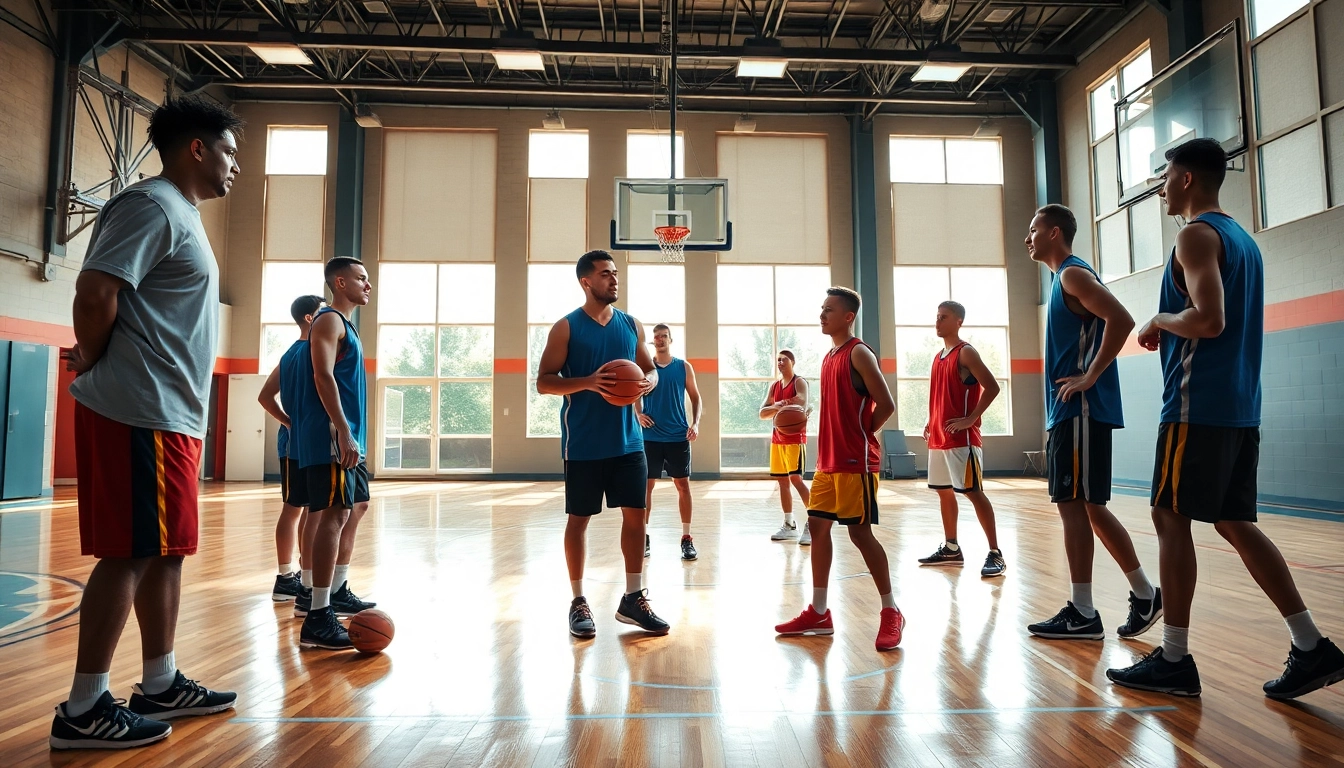Understanding Gym Group Training
Definition and Overview of Gym Group Training
Gym group training, often referred to as group fitness classes, is a popular format within health and fitness facilities where individuals come together to participate in guided workouts led by a trained instructor. These sessions vary widely in type, ranging from high-intensity interval training (HIIT) to yoga, cycling, and strength training, creating an inclusive environment that encourages camaraderie and collective motivation. In contrast to one-on-one personal training, gym group training fosters a sense of community, creating an experience that combines physical fitness with social interaction. Participants of all fitness levels can benefit from structured workouts that not only challenge them but also allow for connection and support among peers. Gym group training is not merely about physical exertion; it is also about the shared experience of working towards common health and fitness goals.
Benefits of Participating in Group Sessions
Group training sessions come with a plethora of benefits that appeal to fitness enthusiasts and newcomers alike.
- Motivation and Accountability: Exercising in a group setting enhances accountability, as the presence of others often nudges participants to push their limits. This external motivation can lead to increased effort and consistency.
- Variety and Fun: Group sessions typically include a range of exercises that keep workouts fresh and engaging. Instructors often incorporate music and themed workouts, making the experience enjoyable.
- Professional Guidance: With a qualified instructor leading the workout, individuals receive instant feedback on their form and technique, reducing the risk of injury while maximizing effectiveness.
- Building Community: Participants often forge friendships and build a supportive network. This social aspect can make fitness a more enjoyable and sustainable part of one’s lifestyle.
- Increased Accessibility: Group training sessions offer a cost-effective way to access high-quality instruction, making fitness more affordable than personal training.
Key Differences Between Group and Personal Training
While both group and personal training offer valuable fitness opportunities, they differ significantly in structure and experience.
Personal Attention vs. Shared Guidance
Personal training provides individualized attention, allowing trainers to tailor workouts specifically to one person’s goals and fitness level. Conversely, group training might not afford the same level of personalization, but it cultivates a diverse atmosphere where shared experiences are prevalent.
Cost Implications
Personal training can be significantly more expensive than group training, making it less accessible for some individuals. Group training sessions provide a more budget-friendly option for those seeking effective workouts.
Social Interaction
In personal training sessions, the interaction is typically reserved between the trainer and the trainee, while group training fosters a dynamic environment where participants can motivate and support one another.
Setting Up Effective Gym Group Training Sessions
Selecting the Right Workout Plan
Choosing an appropriate workout plan is crucial for the success of group training sessions. The selected regimen should cater to the fitness levels and interests of participants. This might entail offering multiple versions of exercises to accommodate beginners, intermediates, and advanced participants, ensuring that everyone can engage safely and effectively.
Consider the following when selecting a workout plan:
- Demographics: Understand the age, fitness backgrounds, and preferences of the group to tailor sessions.
- Goals: Decide if the goal is strength training, endurance, flexibility, or a combination of these.
- Duration: Sessions can vary in length, generally ranging from 30 to 60 minutes. Choose the duration that best fits the group dynamic and session type.
- Equipment Needs: Determine if sessions will rely on equipment such as dumbbells, bands, or mats, and ensure these items are available in adequate quantities.
Choosing the Right Group Size
The size of a group training session can greatly impact the effectiveness of the workout. Larger groups might create a more energetic atmosphere but may hinder personalized feedback from the instructor. Conversely, smaller groups allow for more individualized attention. A balance must be struck based on the goals of the group and the capabilities of the instructor.
Ideal group sizes generally range between 8-15 participants, allowing for interaction while still enabling instructors to provide guidance and support. As sessions grow in size, consider implementing assistant trainers to maintain effective supervision and quality instruction.
Creating a Welcoming Atmosphere
A welcoming atmosphere can significantly influence participants’ motivation and retention rates. Instructors should focus on creating an inclusive environment that encourages all members to feel comfortable regardless of skill level. Techniques to foster a positive atmosphere include:
- Warm Welcomes: Greet participants as they arrive and encourage interactions among group members.
- Inclusivity: Ensure that exercises can be modified for different skill levels and encourage all group members to participate at their own pace.
- Positive Reinforcement: Use motivating language and celebrate participants’ achievements to boost morale.
Best Practices for Gym Group Training Instructors
Developing Engaging Sessions
Creating engaging sessions is essential for holding participants’ attention and ensuring their continued participation. To keep workouts dynamic, instructors can incorporate a variety of teaching techniques, including:
- Warm-Up and Cool-Down: Always integrate a proper warm-up and cool-down to enhance performance and prevent injuries.
- Variety of Formats: Utilize different training formats, such as circuits, partner work, and themed workouts, to keep participants on their toes.
- Incorporate Challenges: Introduce monthly challenges or fitness goals to engage participants and promote healthy competition.
Managing Group Dynamics
Group dynamics can influence the training experience significantly. Instructors should be adept in reading the room and making adjustments as necessary. Key strategies include:
- Encouraging Interaction: Foster group interaction and socialization during warm-ups or breaks to build camaraderie.
- Addressing Conflicts: If interpersonal issues arise, address them swiftly and privately, maintaining a positive environment for all group members.
- Encouraging Teamwork: Implement pair and team exercises to enhance cooperation between participants.
Encouraging Participation and Motivation
Motivating participants to engage fully in group training sessions can be accomplished through several methods:
- Use of Positive Reinforcement: Acknowledge improvements, effort, and attendance regularly to build motivation.
- Setting Group Goals: Work with participants to establish group goals, allowing everyone to contribute to the team’s achievements.
- Surprise Elements: Introduce surprise challenges or rewards to keep the excitement alive.
Common Challenges in Gym Group Training
Addressing Varying Fitness Levels
One of the foremost challenges in group training is managing varying fitness levels among participants. To create an inclusive experience:
- Offer Modifications: Instructors should demonstrate modifications for both easier and more challenging variations of exercises.
- Encourage Individual Pace: Stress that participants should work at their own pace without comparison to others.
- Use Opt-In Options: Allow participants to choose from different intensity options during the session.
Conflict Resolution Among Participants
Conflict and interpersonal issues can occasionally arise in group settings. To manage conflicts effectively:
- Observe Dynamics: Be vigilant about group interactions, addressing any issues before they escalate.
- Seek Feedback: Provide a platform for participants to voice concerns, whether individually or through anonymous methods.
- Private Conversations: If conflicts arise, have private discussions with the involved parties to work towards resolution.
Maintaining Engagement Over Time
Participant engagement can wane over time. To maintain enthusiasm:
- Adapt Workouts: Regularly modify class formats to keep the workouts fresh and engaging.
- Retain Communication: Keep communication channels open with participants, either through surveys or casual conversations.
- Rotate Instructors: Consider having different instructors lead sessions occasionally to provide fresh perspectives.
Measuring Success in Gym Group Training
Using Performance Metrics and Feedback
Measuring the success of gym group training involves assessing various performance metrics and generating participant feedback. Metrics might include attendance rates, participant satisfaction scores, and improvements in fitness tests. Regularly gather feedback through informal conversations or structured surveys to refine sessions and improve outcomes.
Adjusting Programs Based on Participant Goals
Instructors should regularly assess fitness goals and modify training programs to align with participant objectives. Initiatives could involve individual goal-setting sessions, periodic fitness assessments, or progress check-ins that inform adjustments to the workout plan.
Success Stories and Testimonials
Sharing success stories and testimonials can enhance the group training experience. Highlighting the positive impacts on individuals’ lives—including weight loss, improved strength, and enhanced wellbeing—can serve as motivational tools for both current and prospective participants.



